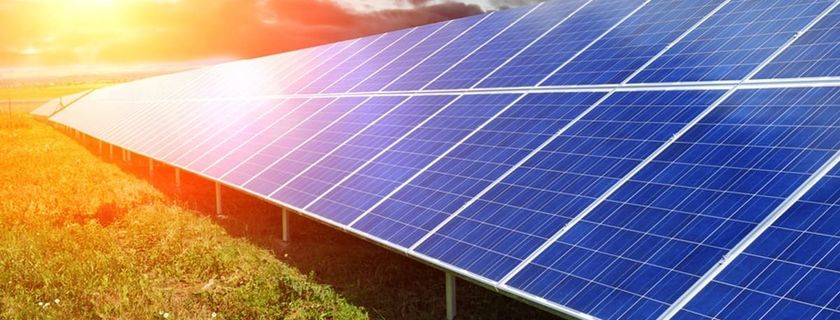
CIRCUSOL: Solar power business models towards a circular economy in Europe (PRESS RELEASE)
CIRCUSOL: Solar power business models towards a circular economy in…

The safe, reliable, efficient, and non-polluting nature of solar photovoltaic (PV) energy has turned it one of the preferred avenues to decarbonize the economy and reach clean energy targets. Over the last decade, the number of solar photovoltaic (PV) installations has grown dramatically, with further expansion expected in the future. Although PV panel waste is not a problem today (lifetime is around 25 years), it will be soon. Alarming statistics released by the International Energy Agency suggest that between 1.7-8 and 60-78 million tons of PV panel waste will have accumulated by 2030 and 2050, respectively.
A similar situation is expected for lithium-ion batteries (LIBs) from electric vehicles, which, at the end of their automotive life, can serve as stationary units for renewable energy sources. Sales of EVs have been on the rise and will continue to exhibit this trend, driven by falling battery costs and increasing awareness about the environmental benefits of divesting from fossil fuel-powered vehicles. Just as with PV panels, waste projections for EV batteries are shockingly high for the next decade.
The CIRCUSOL project is born in response to this worrying waste scenario. CIRCUSOL is a research and innovation action project funded by the Horizon 2020 Programme of the European Commission, which fosters the development of business models for a circular solar photovoltaic industry in Europe. Besides business models, the focus of the project also lies on studying the technical feasibility of deploying 2nd life PV panels and LIBs.
In this article, Maria Franco, a Circular Economy Specialist, revisits some of the highlight activities carried out during the 2-day CIRCUSOL Consortium Meeting that took place in Antwerp and Waasland (Belgium) in January 2019.
Presentation of the study conducted by BFH
On day 1, I was in charge of presenting the outcomes of a systematic literature review commissioned to the BFH as part of the CIRCUSOL project. I, together with Stefan Grösser, used open coding to systematically analyze 112 peer-reviewed academic articles published between 2000 and August 2018. The was aimed at understanding the current functioning of the PV and EV battery value chains, from R&D/product design to product disposal.
The review also looked for relevant literature on strategies for slowing (e.g., circular product design, circular business models such as PSS, and reuse) and closing loops (e.g., recycling) in a circular economy. We believe the study of value chains in the context of CIRCUSOL is of interest from both a policy and a firm perspective. If policy makers are to ensure collaboration for innovation (by offering the right incentives to the right players in the different value chain segments) and the large-scale deployment of PV systems, a value chain perspective is needed. Similarly, knowledge of the different value chains is essential for managers and entrepreneurs looking for ways to participate or innovate within a circular PV ecosystem.
Co-creation session
During the morning of the second day, VITO and BFH organized a co-creation session where participants got together in groups to envision the future of the PV and EV battery industries. To think about the desired tomorrow, groups focused on some of the design, technical, business model, and regulatory barriers exhibited by both value chains today. Participants were engaged and critical about some of the barriers, raising interesting questions and points of view. Proposals for change were abundant, hopeful, and mostly focused on the short- and medium-term. It was really exciting to see how positive and committed everyone was about a more sustainable, circular PV industry!
Visiting one of CIRCUSOL’s demonstrators
On day 2, we also visited one of CIRCUSOL’s demonstrators, the co-housing Waasland in Sint-Niklaas. The housing complex consists of 22 heterogeneous households where people from a wide range of age groups cohabitate. Overall, the co-housing project is aimed at providing a robust renewable energy supply (it features the use of 2nd life PV panels and geothermal energy) at minimal investment and operational costs, as well as the opportunity for residents to share their day-to-day activities with like-minded neighbours.
One of the resident couples agreed to let us into their apartment to have an idea of how the inside looked like. The owners were a couple in their 70s who had sold their previous house to invest in one of the apartments at Waasland. Once inside the property, I took the opportunity to congratulate them for their lovely place. They warmly thanked me and said: “I hope it is the younger generations the ones who benefit from this decision we have made.” The man’s reply made me think deeper about the core values common to all the residents at Waasland and about their willingness to experiment with the new business models proposed by CIRCUSOL.
AUTHOR: MARIA FRANCO, Circular Economy Specialist and Postdoctoral Researcher at the Bern University of Applied Sciences

CIRCUSOL: Solar power business models towards a circular economy in…